Guest
PALILULA COMMUNITY, THE BIGGEST IN BELGRADE AND UNIQUE IN SERBIA
On the Wings of the Great River
Extending from the very center of the capital to big suburban areas, rich villages and vivid swampy areas, the kingdom of hunting and fishing, Palilula has great opportunities and the time before it. It is the community with the longest shore of Danube on the entire river flow (60 kilometers). The day is near when the Belgrade harbor will be on the left bank, in the new industrial and business zone, on its place the most beautiful Danube town marine from the spring to the mouth, and Ada Huja the real “Europolis on the Danube”
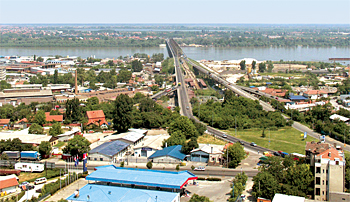 The community of Palilula is the biggest by its surface (44 586 hectares) among seventeen town communities, and the fourth for the number of residents (officially 155 902, unofficially 200 000 residents). It extends on both banks of the Danube, connected with Pančevački Bridge (built in 1933, torn down in 1944, and renovated in 1946). On the left bank of Danube, Palilula includes almost all settlements in the area of the capital on the road to Zrenjanin and Pančevo. On the right side, from neighboring Belgrade communities it is separated by the streets Takovska, Boulevard Kralja Aleksandra, Ruzveltova and Dragoslava Srejovića. Across Karaburma, Višnjička Banja and villages Višnjica, Slanci and Veliko Selo it goes all the way to the Danube. The community of Palilula is the biggest by its surface (44 586 hectares) among seventeen town communities, and the fourth for the number of residents (officially 155 902, unofficially 200 000 residents). It extends on both banks of the Danube, connected with Pančevački Bridge (built in 1933, torn down in 1944, and renovated in 1946). On the left bank of Danube, Palilula includes almost all settlements in the area of the capital on the road to Zrenjanin and Pančevo. On the right side, from neighboring Belgrade communities it is separated by the streets Takovska, Boulevard Kralja Aleksandra, Ruzveltova and Dragoslava Srejovića. Across Karaburma, Višnjička Banja and villages Višnjica, Slanci and Veliko Selo it goes all the way to the Danube.
Chiefs of the community, in the interview for National Review, point out that this community had three very different totalities: the town totality (in the very center of the town), the suburb totality, and the village totality. The special value of the community is the Danube – there is no other community which has a longer shore than Palilula (60 kilometers!).
Ada Huja of Danube is also a real pearl of Palilula and Belgrade. The residents of Palilula are fighting for a long time for this river island to become the “Europolis on the Danube”. Given that in basic planning documents, Ada Huja is treated as one of the natural beauties of the capital, there are realistic chances that the dream of Palilula residents comes true. In the following five years, the present Belgrade harbor will be moved to the left bank of Danube, where a big economy area is planned by the General urbanistic plan. The existing harbor will be turned into a luxurious town marine, one of the most beautiful of the Danube road from Vienna to the Black Sea.
THE PIPE
 The name of Palilula is first mentioned in the beginning of the 19th century and refers to “the villages 15 minutes away” from the town, enclosed by a trench. The origin of the name of this part of Belgrade has no reliable historical facts. The researchers think that the former government, or maybe Prince Miloš himself, forbid smoking on narrow streets of Belgrade because of the easily inflammable buildings. According to other sources, the name of Palilula, as a geographic notion, originates from the beginning of the 19th century. Former practice was to give names to the parts of towns after professions that are practiced in them. One of the most popular professions was pottery. Pottery was baked in ovens which were called lule (“pipes”), because of their shape, so the name was started to use for the part of town where those ovens were placed and used. The name of Palilula is first mentioned in the beginning of the 19th century and refers to “the villages 15 minutes away” from the town, enclosed by a trench. The origin of the name of this part of Belgrade has no reliable historical facts. The researchers think that the former government, or maybe Prince Miloš himself, forbid smoking on narrow streets of Belgrade because of the easily inflammable buildings. According to other sources, the name of Palilula, as a geographic notion, originates from the beginning of the 19th century. Former practice was to give names to the parts of towns after professions that are practiced in them. One of the most popular professions was pottery. Pottery was baked in ovens which were called lule (“pipes”), because of their shape, so the name was started to use for the part of town where those ovens were placed and used.
In the first decades of the 18th century, it was the most beautiful part of Belgrade, From Tašmajdan towards Danube and Bulbulder (the present Cvijićeva Street) there were “gardens, vineyards, pastures, mills, summerhouses whose owners lived in the town center”. Many colonists have left their testimonies, as well as artisans and tradesmen of German and Serbian origin, which came in the escort of the Austrian army of Prince Eugene of Savoy.
In the time of Prince Miloš, Palilula became a village, thanks to his wish to make a “true town” out of Savamala. He evacuated the residents of Savamala, he gave them buildings sites for free “near the village Palilula”, below the deserted and neglected Batali Mosque (the place of the present Home of the National Assembly of Serbia).
Palilula survived many colossal historic events. One of them was the Sultan’s Edict, on the Day of St. Andrew, on November 30th 1830, according to the old calendar: the Sublime Porte gave Serbia full national autonomy, a hereditary dignity to Prince Miloš and gave Serbs the right to the town of Belgrade. This was announced on the hills of Tašmajdan Park, below which were mines of hard rock and saltpeter, and nearby the Turks have burned the relics of St. Sava in 1595, by the command of Sinan-Pasha.
Today, Tašmajdan is one of the central town parks, nicely arranged, with many interesting things for children and young people. The name Tašmajdan comes from the Turks: the word taš means stone and majdan is a mine. Several meters under the ground are remains of a two millennium old plumbing system. Chronics remember that the present park was a cemetery for a long time. The caves of Tašmajdan, recently opened for visitors, hide important traces of the two thousand year old history of Belgrade.
UNDER THE PROTECTION OF ST. MARKO
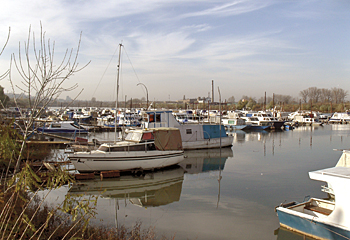 One of the most beautiful buildings of sacral architecture of Serbian-Byzantine style is the Church of the Saint Apostle and Evangelist Marko in the Tašmajdan Park. Until the building of the Church of St. Sava in Vračar, this was the biggest Serbian church. The work on building a new, present Church of Sr. Marko begun in 1932. Brothers Petar and Branko Krstić, professors of the Faculty of Architecture, made the project and the plan of the monumental church. The main inspiration of these artists was Gračanica. In the church is the crypt of the Obrenović family, which was earlier placed in the old Church of St. Marko. Besides King Aleksandar Obrenović and Queen Draga, in this crypt are the remains of some other members of the Obrenović family, some bishops and metropolitans. In the church is also the sarcophagus with the remains of Emperor Dušan (1308-1355), brought from the Monastery of the Holy Archangels near Prizren, as well as the marble crypt of Patriarch German Đorić (1898-1991). The slava of Palilula community if the Day of St. Marko, on may 8th (celebrated again from 1997). One of the most beautiful buildings of sacral architecture of Serbian-Byzantine style is the Church of the Saint Apostle and Evangelist Marko in the Tašmajdan Park. Until the building of the Church of St. Sava in Vračar, this was the biggest Serbian church. The work on building a new, present Church of Sr. Marko begun in 1932. Brothers Petar and Branko Krstić, professors of the Faculty of Architecture, made the project and the plan of the monumental church. The main inspiration of these artists was Gračanica. In the church is the crypt of the Obrenović family, which was earlier placed in the old Church of St. Marko. Besides King Aleksandar Obrenović and Queen Draga, in this crypt are the remains of some other members of the Obrenović family, some bishops and metropolitans. In the church is also the sarcophagus with the remains of Emperor Dušan (1308-1355), brought from the Monastery of the Holy Archangels near Prizren, as well as the marble crypt of Patriarch German Đorić (1898-1991). The slava of Palilula community if the Day of St. Marko, on may 8th (celebrated again from 1997).
In the area of Palilula is the only church of Russian Orthodox Church in Belgrade, as well as the residence of the Parish of the Moscow patriarchate. The Russian church community in Belgrade was formed in November 1920, when began the organized parish life of Russians in the Kingdom of Serbia, Croatia and Slovenia. On the Day of the nativity of the Holy Theotokos, on September 21st 1924, the cornerstone way laid and on January 4th 1925 the new Church of the Holy Trinity was consecrated. It is now placed between the Church of St. Marko and the building of RTS. In April of 1999, during the NATO bombing of the building of national television, the Russian Church was damaged.
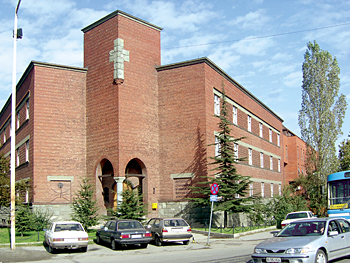 In the community of Palilula is the Monastery of St. Stefan in Slanci, the only active church of Hilandar in Serbia. It is not known when was it built and who was its founder. According to oldest facts, in the 15th, 16th and 17th century it was known as the “old monastery”, and folk legends connect it with the Nemanjić family. It was destroyed several times and renovated as well. In 1833, it was completely torn down because the cracked wall could not serve their purpose anymore. On the place of the old monastery, a small chapel with a rectangular basis and a characteristic roof was built in 1900. It was in use until 1968 when the renovation of the monastery began. The reconstruction work was finished in 1970. The Church of St. Stefan in Veliko Selo was built in 1834 from the material of the torn down church in Slanci. In the community of Palilula is the Monastery of St. Stefan in Slanci, the only active church of Hilandar in Serbia. It is not known when was it built and who was its founder. According to oldest facts, in the 15th, 16th and 17th century it was known as the “old monastery”, and folk legends connect it with the Nemanjić family. It was destroyed several times and renovated as well. In 1833, it was completely torn down because the cracked wall could not serve their purpose anymore. On the place of the old monastery, a small chapel with a rectangular basis and a characteristic roof was built in 1900. It was in use until 1968 when the renovation of the monastery began. The reconstruction work was finished in 1970. The Church of St. Stefan in Veliko Selo was built in 1834 from the material of the torn down church in Slanci.
From many churches of Palilula we should also mention the Chruch of St. Luka in Krnjača, the old Church of Emperor Constantine and Empress Jelena in Ovča (from 1909, more exactly from 1933), the Church of the transmission of Relics of St. Father Nikolaj in Borča (from 1798, more exactly from 1967), the Chruch of St. Nicholas at the end of Dunavska Street in Višnjica (from 1838) and the only church in Karabruma, at the corner of Pere Ćetkovića and Garsije Lorke streets (from 1988).
SETTLEMENTS AND VILLAGES
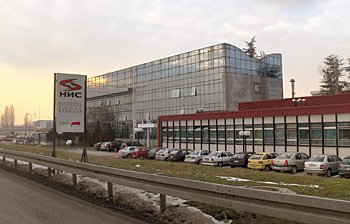 In the settlements of Palilula, on the left bank of Danube live about 72 thousand residents. In the settlements of Palilula, on the left bank of Danube live about 72 thousand residents.
The first settlement after Pančevački Bridge, on the left bank of Danube, in Krnjča, lives 12 thousand people. The first residents of Krnjača were cattle breeders who drove their cattle to pasture and they started settling in 1913. Ovča is 12 kilometers away from Belgrade, and one of the oldest settlements on the left bank of Danube, along with Borča. According to a legend, it got its name after the main profession of its residents (“ovčar” – “shepherd”). Today, residents of Ovča are mostly Romanians.
Borča, one of the oldest settlements in the swampy area of Pančevo, was marked as an island in the 14th century documents. It is six kilometers away from Belgrade. The settlement Kotež was formed in 1968. At first, it was a settlement of workers from “Mostogradnja” Company, Ministry of Internal Affairs and “Rad”. Today, it is an urban settlement.
The most distant local community in Palilula is Padinska Skela. It includes Padisnka Skela, Kovilovo, Glogonjski rit, Jabučki rit, Vrbovsko, Besni fok and Dunavac. The first ground renters were the cattle breeders from a village Padine from Banat, from which the name of the settlement appeared.
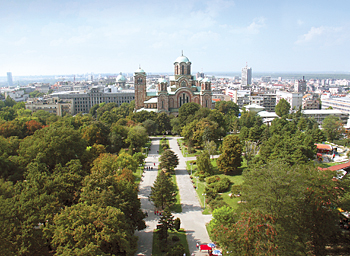 The biggest community of Palilula is Karaburma, on the right bank of Danube. Three villages are next to it: Slanci, Veliko Selo and Višnjica. Bewteen Višnjica and Karaburma lay the urban settlement Višnjička Banja. The biggest community of Palilula is Karaburma, on the right bank of Danube. Three villages are next to it: Slanci, Veliko Selo and Višnjica. Bewteen Višnjica and Karaburma lay the urban settlement Višnjička Banja.
Once “a village 30 minutes away from Belgrade”, Karaburma represents a modern settlement of the town. Two centuries ago, the Turks executed their disobedient subjects in this area. The Turkish name for execution, in literal translation, was “marriage with detah”, so, it is supposed that the name came from the Turkish words kara (black) and burma (wedding ring). In the beginning of the 20th century, first factories are opened in Karaburma, which attracted workers from other parts of Belgrade and Serbia.
Old document claim that Veliko Selo appeared in 1510. After the legend, it got its name because of the area which was right where Slanci is now, called “malo selo” (“small village”). Slanci is first mentioned in documents from 1716, and they extend on both sides of Slanački stream. The village got its name after the salted lake called Mali Slanac.
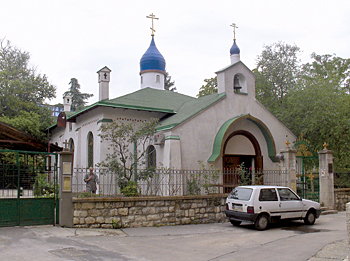 Višnjica is a village with straight streets, famous for its cherries, along the right bank of Danube. Jovan Cvijić marked that Višnjica was called Little Tsargrad on the Danube in the Turkish times. During their reign in Singidunum, the Romans made summerhouses and planted vineyards on the hill above Danube. The hill, which is today known as Višnjička Banja, is six kilometers away from Belgrade. Almost four decades ago, the building of an elite settlement started in that area. Višnjica is a village with straight streets, famous for its cherries, along the right bank of Danube. Jovan Cvijić marked that Višnjica was called Little Tsargrad on the Danube in the Turkish times. During their reign in Singidunum, the Romans made summerhouses and planted vineyards on the hill above Danube. The hill, which is today known as Višnjička Banja, is six kilometers away from Belgrade. Almost four decades ago, the building of an elite settlement started in that area.
There are monuments of newer history in Palilula, such as the Cemetery of Liberators of Belgrade from World War II and the Jewish Cemetery. From important architectural buildings we should mention the Post Office Building, the University Library and the Archives of Serbia. Besides the Community Building in Takovska Street, the endowment of Agnija and Mihajlo Srećković, there are three important informative and cultural institutions: RTS, Children’s Cultural and Educational Center and Theatre “Duško Radović” for children, with the evening scene “Radović”.
The Sports Center “Tašmajdan” is one of the most important sports meeting places of young people. Besides “Tašmajdan” there is “Pionir” Hall. The stadium of “Romantics from Karaburma” – OFK “Beograd” is the biggest open sports object on Karabruma. w
National Review Press
***
Profesorska kolonija (Professors’ Colony)
The settlement Profesorska kolonija is the unique cultural and historical totality of which Palilula and Belgrade can be proud. It is a town area founded between 1926 and 1929 by more than 40 professors of the Belgrade University. On present town maps, Profesorska kolonija is the name for the settlement between streets Cvijićeva, Boulevard Despota Stefana Lazarevića, Mitropolita Petra and Braće Grim.
One of the most famous residents of Profesorska kolonija was Milutin Milanković, who lived in Ljube Stojanovića Street from 1926 until his death in 1958. It is interesting that the street he lived in carries the name of Ljubomir Stojanović, the Minister of Education in the time (1909) when Milutin Milanković started his carrier of a professor in the Belgrade University.
***
Schools and faculties
Today, there are 30 objects of pre-school education, 14 primary schools, six high schools, three high school students’ homes, three faculty students’ homes and eight faculties (Law, Electrical Engineering, Civil Engineering, Architecture, Mechanical Engineering, Chemical Engineering, Mining and Theology Faculty of the Serbian Orthodox Church) with more than 20 thousand students. There is also the Theology High School “Saint Sava”, after which the part of Palilula where it is located got the name Bogoslovija.
***
Paradise for fishermen and hunters
The areas of Pančevo swampy area and the line Slanci – Veliko Selo have great potential fro hunting sports and hunting tourism. Fishing devotees claim that one can fish best on the bank of Danube in the area of Palilula, on its islands, canals, river branches (Crvenka, Sebeš, Dunavac, Mokri Sebeš) and small lakes. We can feel the immense potential of the Danube and its coast for the development of water sports by visiting the kayak clubs in Borča and Višnjica.
|
